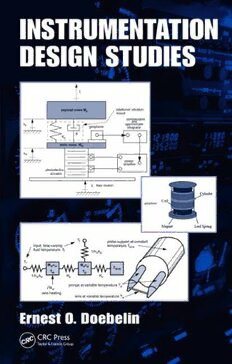
Instrumentation Design Studies PDF
713 Pages·2010·31.458 MB·English
Most books are stored in the elastic cloud where traffic is expensive. For this reason, we have a limit on daily download.
Preview Instrumentation Design Studies
Description:
Integrating physical modeling, mathematical analysis, and computer simulation, Instrumentation Design Studies explores a wide variety of specific and practical instrumentation design situations. The author uses MATLAB® and SIMULINK® for dynamic system simulation, Minitab® for statistical applications, and Mathcad for general engineering computations. Rather than consult the extensive manuals of these software packages, readers can access handy, sharply focused material in the appendices to assist in comprehension. After introducing the techniques behind the design of experiments (DOE), the book discusses several technologies for implementing vibration isolation, the design of a high-accuracy pressure transducer, and the use of cold-wire thermometers for measuring rapidly fluctuating fluid temperatures. It then focuses on a basic piezoelectric actuator that provides translational motions up to about 1mm full scale with nanometer resolution, before covering instruments used to measure the viscosity of liquids as well as two special classes of microphones (infrasonic and ultrasonic) and their important specialized applications. The book also presents statistical tools, such as hypothesis testing and confidence intervals, for experiments; the design and applications of thrust stands for measuring vector forces and torques; and the analysis and simulation of a shock calibrator. It concludes with a discussion of how shock testing machines can help reduce or prevent mechanical failures. Spanning system dynamics, measurement, and control, this book addresses the needs of practicing engineers working in instrumentation fields. It focuses on instruments for various applications, from geophysics to mechanical and aerospace engineering.
See more
The list of books you might like
Most books are stored in the elastic cloud where traffic is expensive. For this reason, we have a limit on daily download.
